September 22, 2019
Nature is painting for us, day after day, pictures of infinite beauty. – John Ruskin
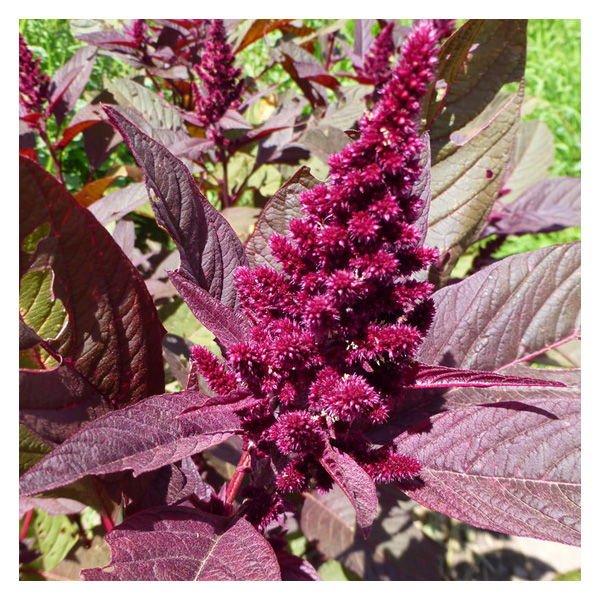
The plant in this photo is amaranth, an ancient grain important to Native American tribes. This red variety, originally grown as a dye plant by the southwestern Hopi Nation, has the reddest seedlings of any amaranth known. The Hopis use the deep-red flower bract as a natural dye to color their piki bread.
Attracted by the stunning red flower, I decided to grow some in the Paradise Farm garden this summer and try to dye some wool with it. My first attempt looked great, but as soon as I washed the wool with water, all the glorious red color washed right out. Then I did some research, and settled on a process that worked great!
- Plant some amaranth seeds! It is easy to cultivate and grow in a variety of climates. It self-seeds and comes back year after year. We also grew a golden amaranth.
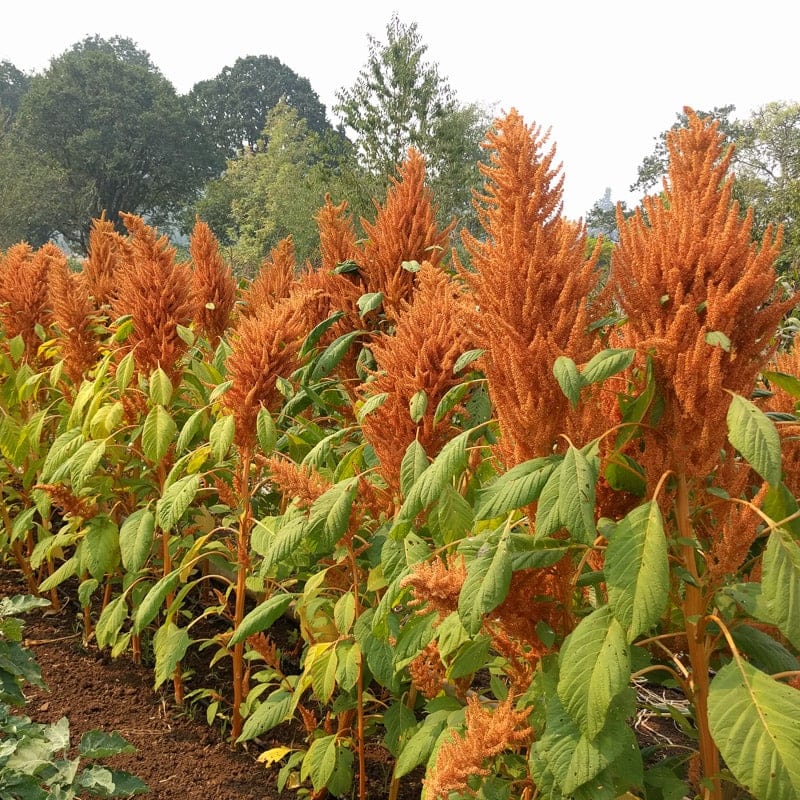
2. Harvest both the leaves and feathery tops for dyeing with the red; just the tops for dyeing with the gold.
3. Use a solar dyeing process for amaranth (high heat destroys the colorfastness). Solar dyeing is a fun project to do with kids. In this case, we just filled gallon sized glass jars with the plant material and filled the jars with water, then let them sit outside in a sunny spot for a week.
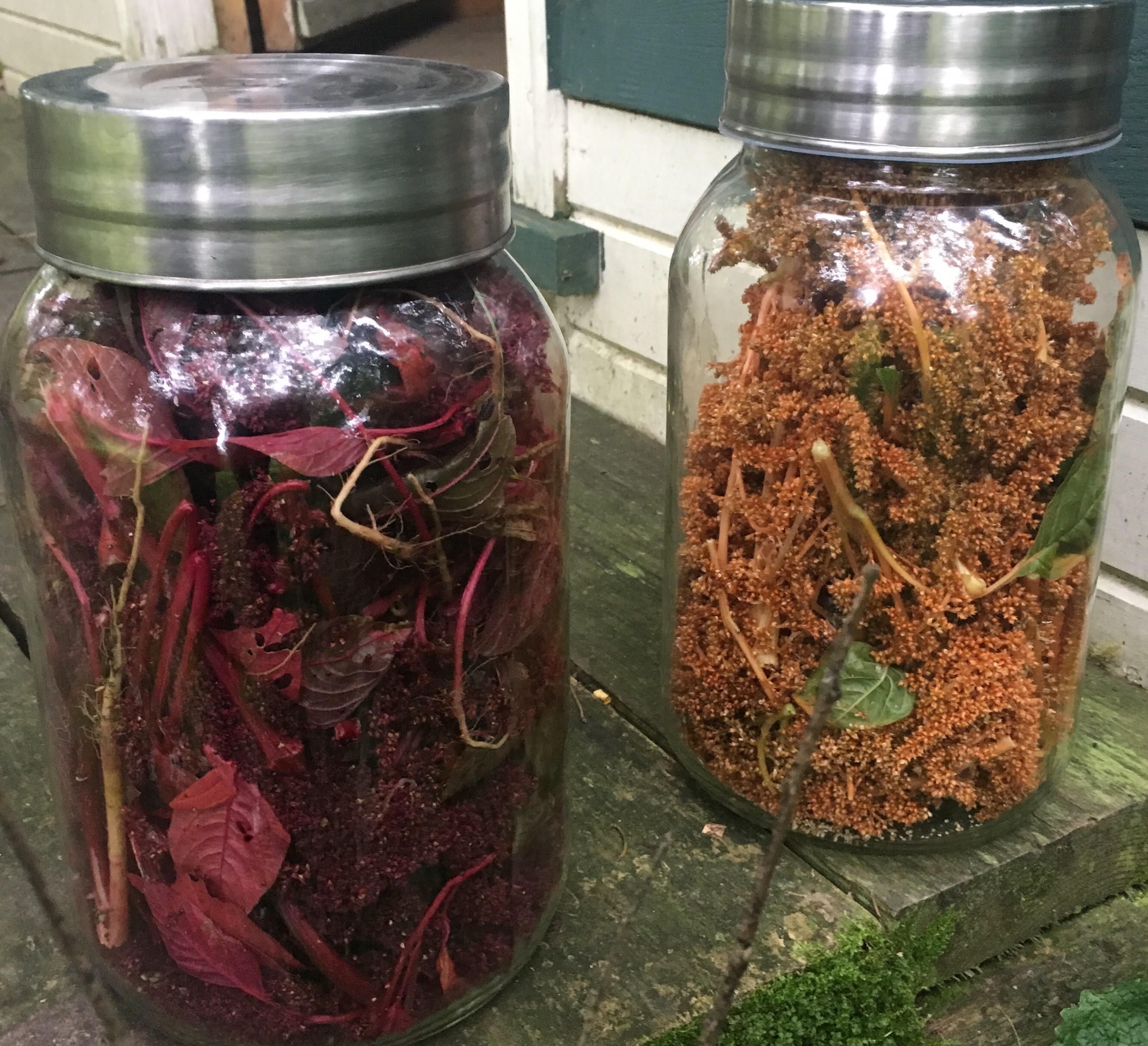
4. The evening before you are ready to dye, mordant the silk, wool, or other fabric. This is an important step with amaranth. Not sure how to mordant? Check out the FREE download below about natural dyeing!
5. Strain the plant material out of the jar, leaving just the rich colored dye. Add your textile — we used bulky wool yarn.
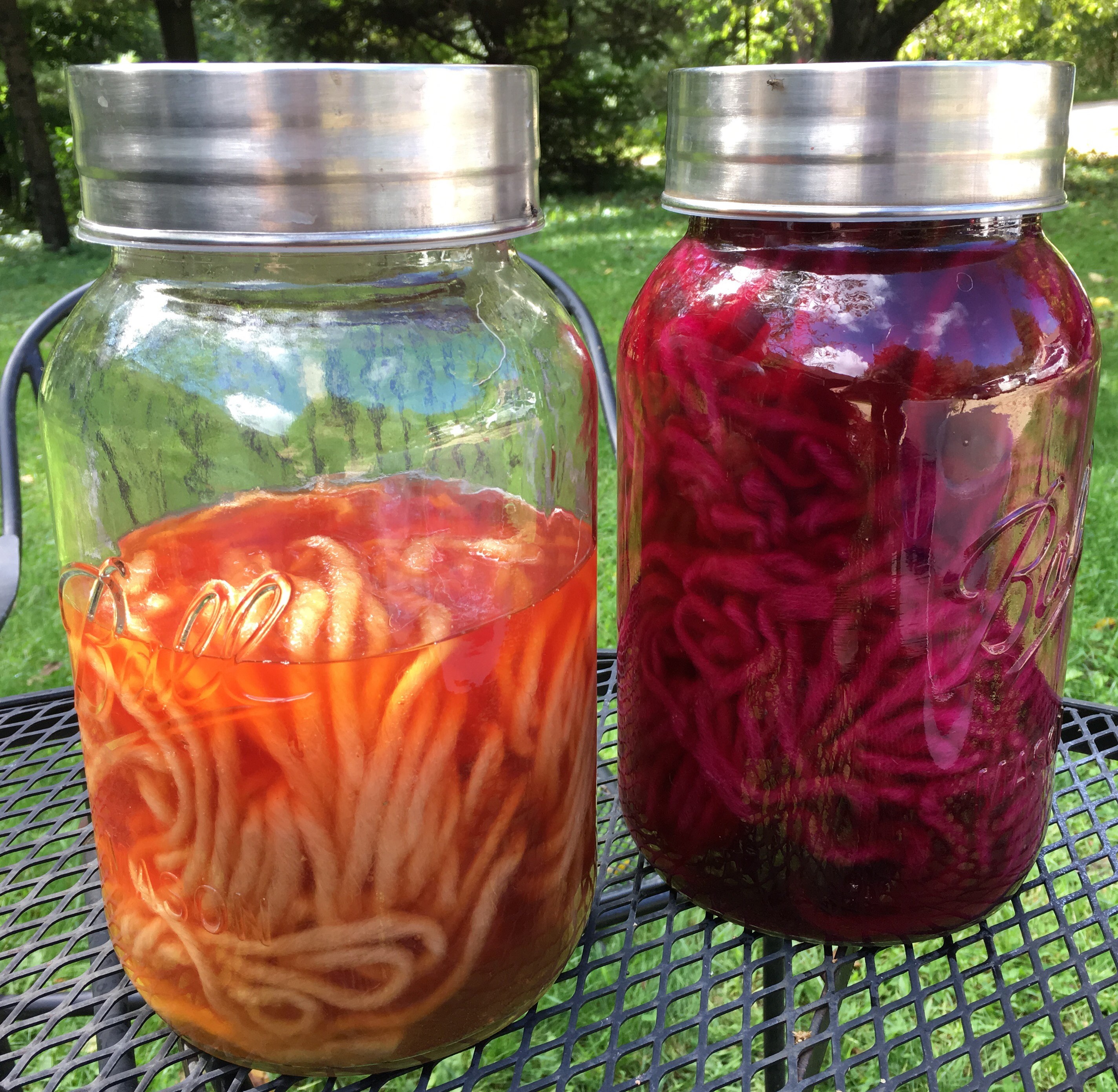
6. Back in the sun for a few days, letting the wool absorb all the beautiful color.
7. Take it out, rinse well, and let it dry. Beautiful!
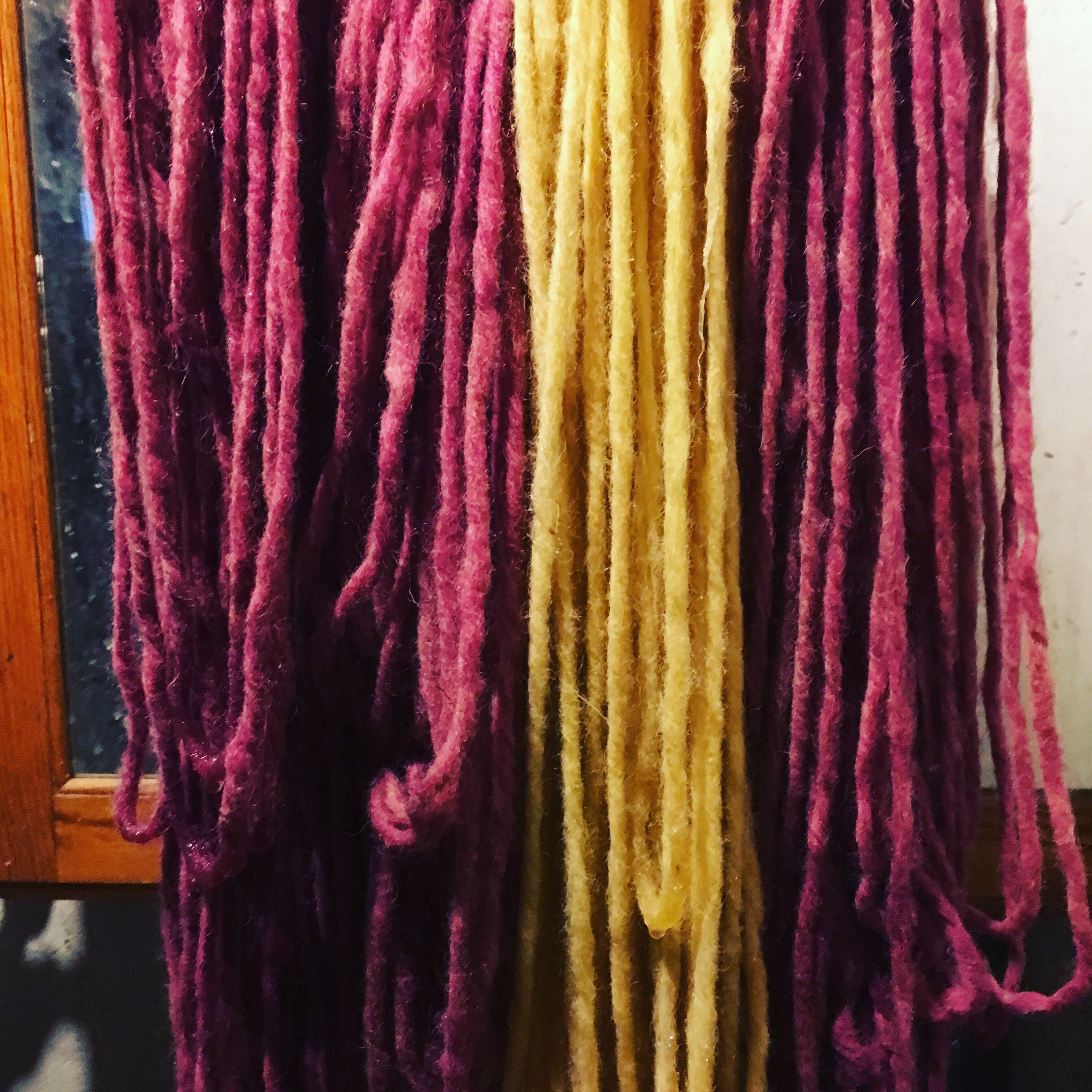
Creative Exploration
Natural plant dyeing is so fun and beautiful, and easy enough for anyone to do at home with a few simple supplies. What plants can you use? Click here for a list of plants that yield different colors.
Do you want to learn more about the process of natural plant dyeing? Click here for a FREE guide to natural dyeing.
Interested in learning more about growing or cooking with amaranth? Click here.
Have fun!

Mary O’Connell, Your Living Arts Weekly blog editor
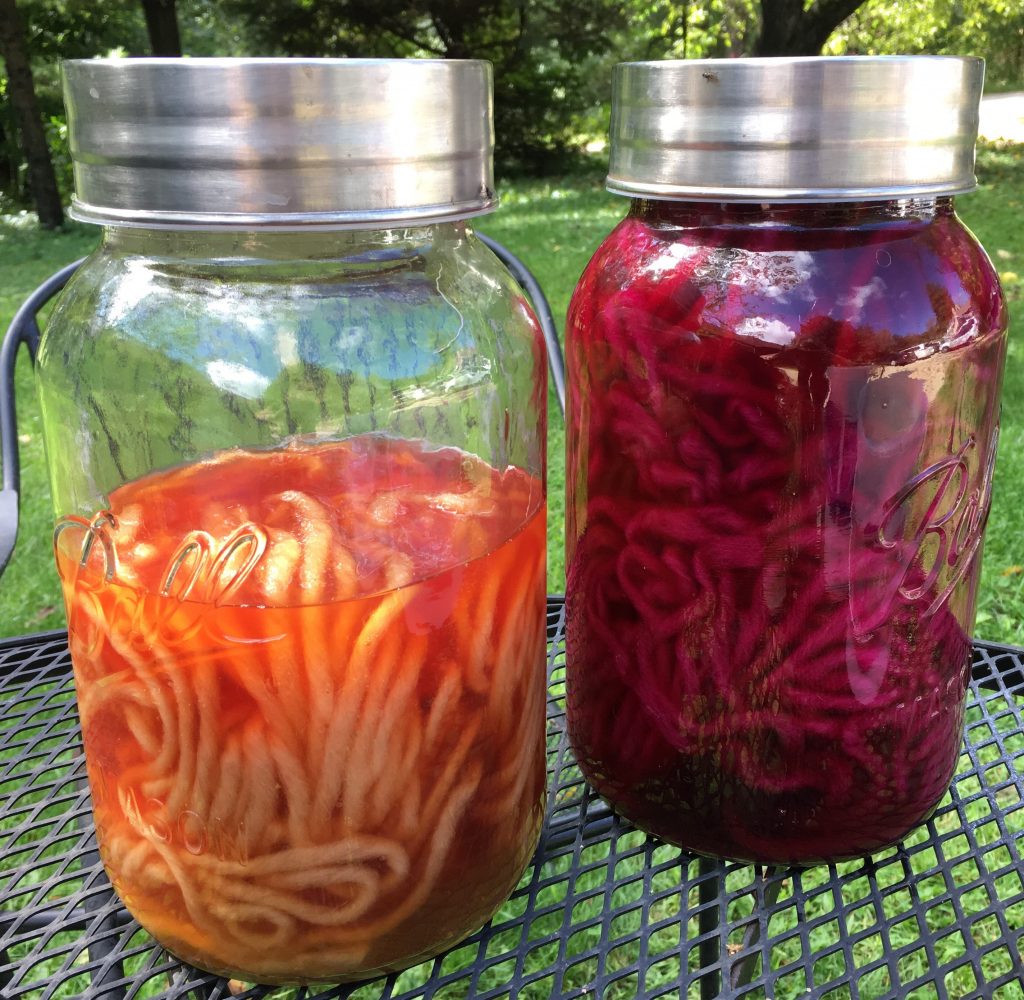
Omg! I used to grow Amaranth 20 years ago! It was almost wiped out by Spanish because it was so important to the Hopi. I loved how wild and huge it got. Thanks for reminding me about this powerful plant I will buy some seeds ASAP
Wow, I am glad they didn’t eradicate amaranth! It is beautiful.
I have been obsessed with natural dying all summer. Amaranth is just ready for harvest here now so I am so happy for your inspiration!
Great! Let us know how it goes!